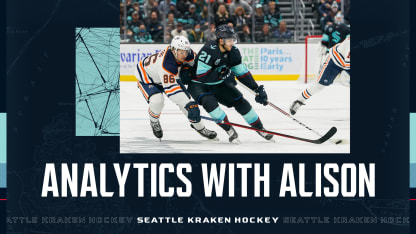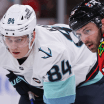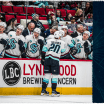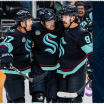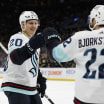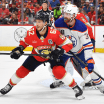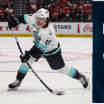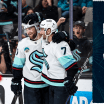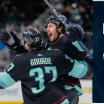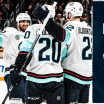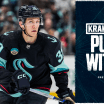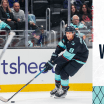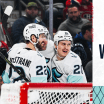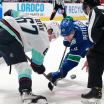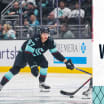If you're in Climate Pledge Arena for a Kraken game, "possession time by player" is a stat you might see displayed from time to time as the Stat of the Game. But what does it mean, what's a "good" amount of possession time and who leads in this category for the Kraken?
Let's dig in.
Right now, player possession time is not a publicly available stat. But we do have access to this information courtesy of Sportlogiq. For our purposes, possession counts from the time a player receives a pass or retrieves a loose puck to the time when possession is lost or a successful pass is completed.
To take this one step further, we can not only look at possession time by player but also by zone. So, let's look at time when a team is most likely on the attack. If we segment out possession time in the offensive zone, in terms of NHL forwards, an average amount of possession time is :27.
Who leads the Kraken?
With an average of 43 seconds per game, it's Alexander Wennberg.
"I feel like that's part of my game," Wennberg said. "I feel like when I have the puck, I can make plays and I feel like that's the best part of my game. So, if I can keep holding on to it, protect it and be strong on it, it helps me to improve in my game."
Wennberg, who also has the second most assists on the team (11), says part of his strategy is to not just use his stick to shield opponents away from the puck but also his skates. He paid attention to how much this frustrated him when other players did it and incorporated it into how he plays.
But what about that "strong on the puck" reference? "Strong on the puck" or "hard on the puck" are common descriptors we hear in hockey. But it's more than being the biggest or strongest player.
Right on Wennberg's heels in terms of offensive zone possession time is Yanni Gourde (:40 per game). We asked him about being hard on the puck. For Gourde it's not just about maintaining possession, it's about getting possession in the first place.
